Customer reviews hold incredible power. Average Star Ratings (ASR) are more than just numbers for restaurant brands. They can determine whether your brand is a thriving business or just one that survives.
We categorized online reviews with positive attributes (“welcome,” “friendly”) and negative ones (“rude,” “unprofessional”). Based on these terms, we calculated a “hospitality” net sentiment score (NSS).
We found that restaurants with stronger NSS outperformed the rest of the market by 2.4% in sales growth and 1.8% in traffic growth.
Let’s explore the four main impacts that ASR has on restaurant brands.
1. Customer Perception: The First Impression That Lasts
Reviews are often the 1st impression you make on a potential customer. These ratings impact their decision to do business with your brand.
A high Average Star Rating can instantly establish trust and suggest a high-quality experience.
A low Average Star Rating? It might deter potential customers before they’ve read a single review.
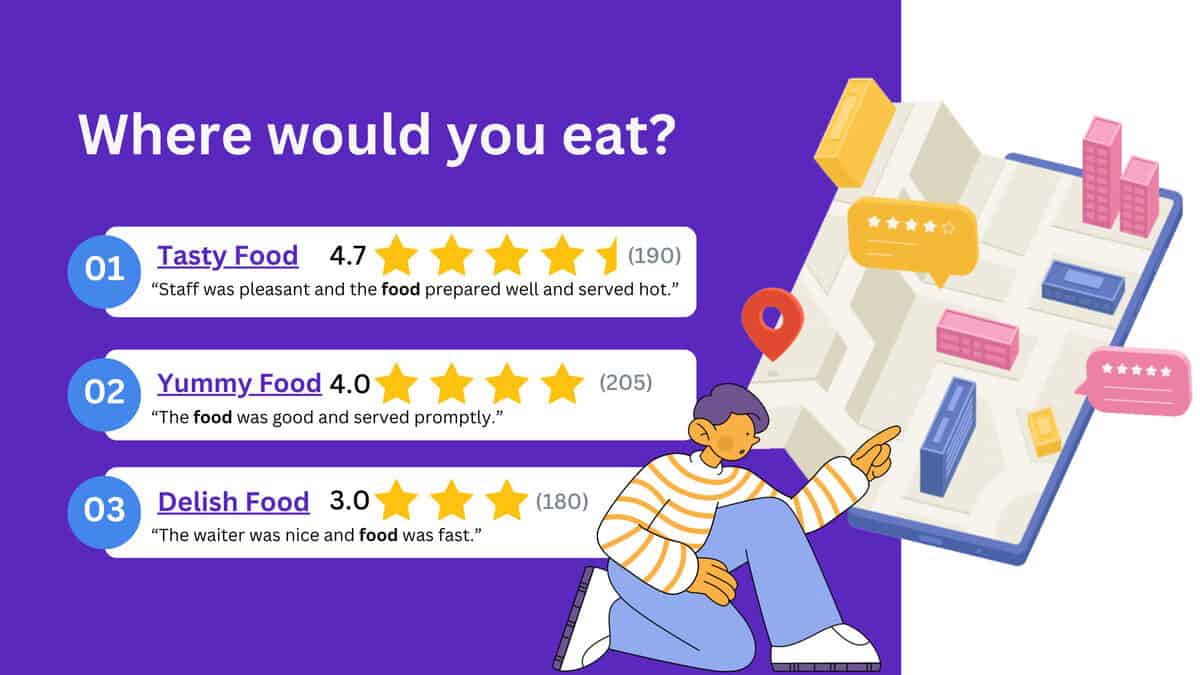
Your brand’s online presence is the new “curb appeal” is critical.
So, how do you make sure to make an excellent first impression?
Best Practice #1: Actively encourage customers to leave positive reviews.
Implement a simple follow-up strategy after a successful meal, such as a friendly email, a QR code, or SMS with a direct link to leave a review.
Timing-wise— the closer you can get a guest’s review to their experience, the better.
Best Practice #2: Monitor and respond to reviews promptly.
Whether it’s a thank you for positive feedback or a resolution for a negative comment, timely responses show that you value customer input and are committed to improving their experience.
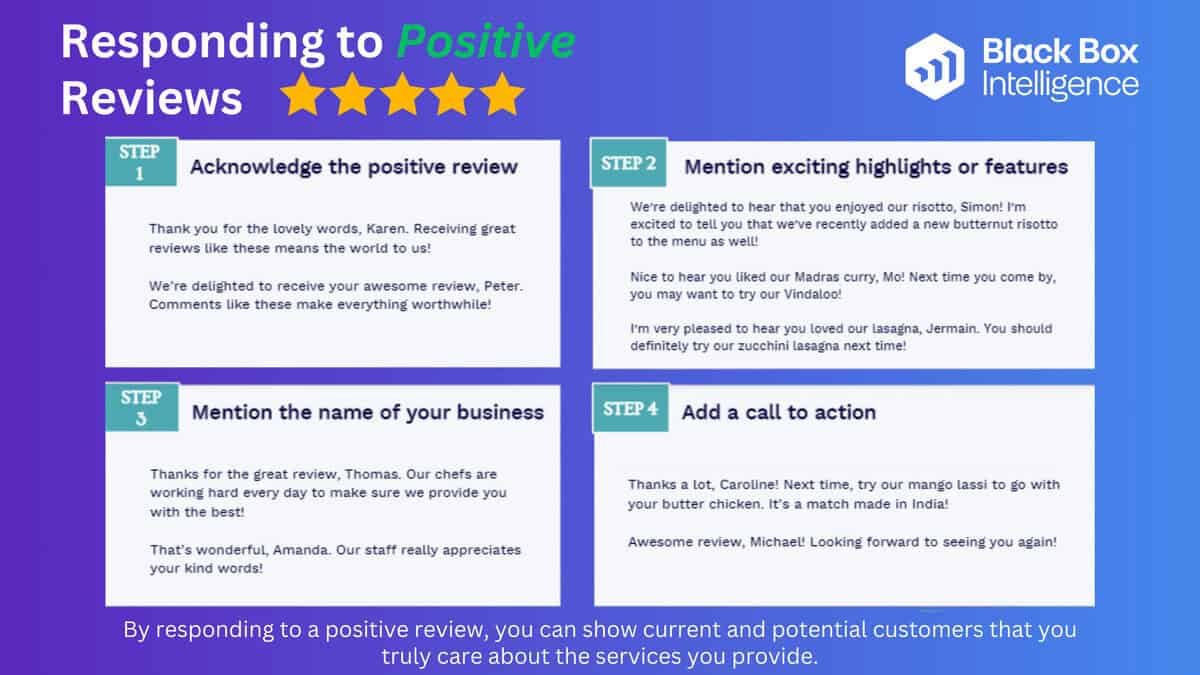
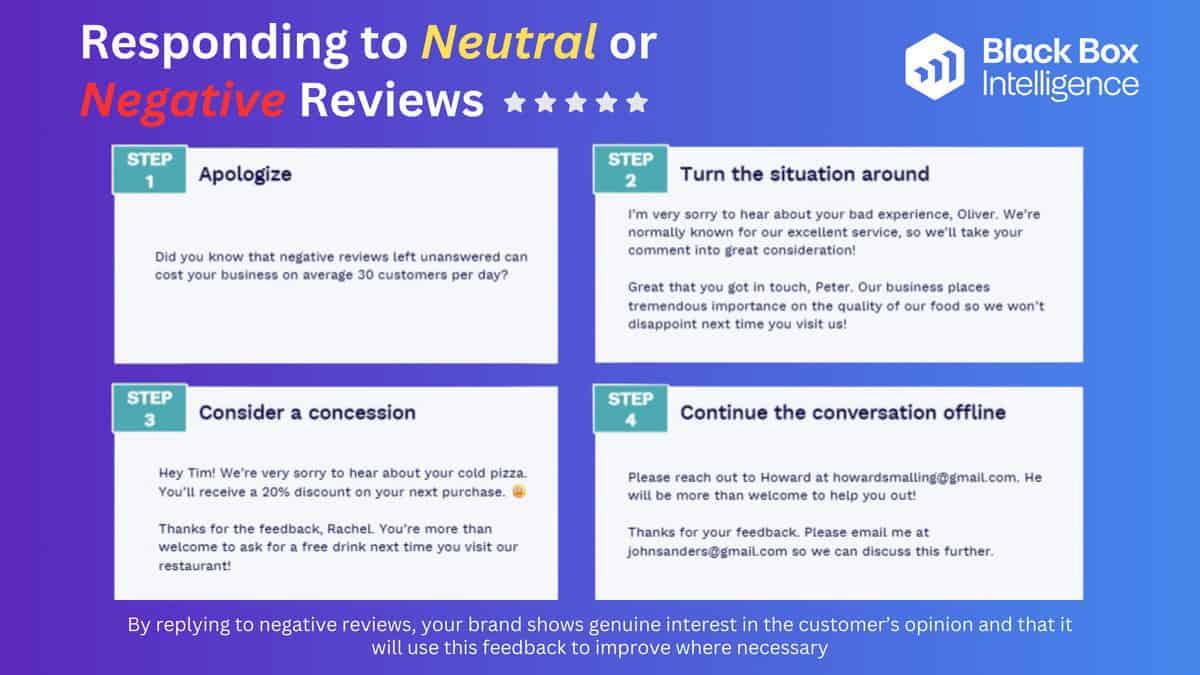
2. Revenue Impact: Star Ratings Directly Affect Sales
It’s no secret that higher star ratings correlate with higher sales. Black Box Intelligence data shows the impact ASR had on sales and traffic in the first half of 2024 to 2023.
Star ratings significantly impact a business’s performance. They often create the first impression for potential customers, whether good or bad.
The connection between ratings and revenue is clear and must be actively managed.
The two keys to impacting your bottom line?
- Encourage satisfied customers to leave positive reviews.
- Swiftly address negative feedback.
So, how do you ensure your sales and ASR improve?
Best Practice #3: Implement a feedback loop.
Use negative reviews as a learning tool.
Analyze them to identify recurring issues and address them systematically.
Turn negative reviews into action items for staff training and goals.
This not only improves your service but also boosts your rating over time.

Best Practice #4: Engage satisfied customers.
Encourage those who had a positive experience to share their feedback online.
You can do this through personalized thank-you notes, social media shoutouts, or even in-person requests during their visit.
This can also kickstart positive word-of-mouth if done correctly and consistently.
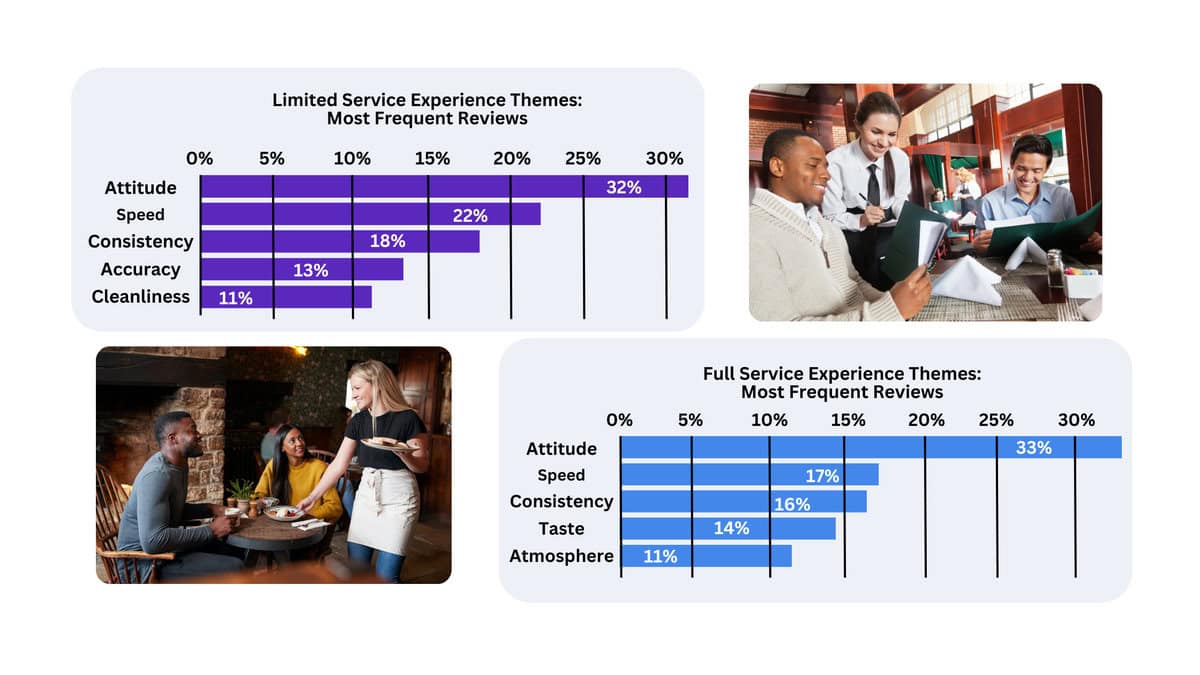
3. Employee Morale: Ratings Reflect on Your Team’s Performance
Average star ratings don’t just impact how customers view your brand.
They also influence how your employees feel about their work.
High ratings are often a source of pride and can be used to shout out specific team members.
Employees who see their hard work reflected in positive reviews are more likely to feel valued and motivated.
Plus, a team with positive recognition can lead to better service and even higher ratings.
On the flip side, low ratings can help give your team direction for improvement when monitored and addressed.
So, how do you leverage reviews to impact the team?
Best Practice #5: Intentionally celebrate positive reviews internally.
Share great reviews with your team and publicly acknowledge the employees mentioned.
This boosts morale and motivates your team to maintain high standards.
Bonus: Consider turning positive reviews into a competition/incentive for your staff. If they are mentioned in a positive review, enter them into a drawing for a prize like a gift card.
This will encourage the staff to provide top-notch experiences and proactively ask for reviews.
Best Practice #6: Foster a Culture of Continuous Improvement
Encourage a mindset where both positive and negative reviews are viewed as opportunities for growth.
Regularly review feedback as a team and brainstorm ways to enhance the customer experience, making every review a stepping stone towards better service.
Getting the team involved means acquiring buy-in and a higher likelihood of positive change that will stick.
4. Customer Loyalty: Ratings Influence Repeat Business
Average star ratings don’t just attract new customers—they play a crucial role in retaining existing ones.
A high average rating reassures them that their favorite spot is still a top choice.
Maintaining a high ASR reinforces their loyalty, encouraging repeat visits.
However, even your most dedicated customers might reconsider their loyalty when ratings slip.
They may explore other options if there is a pattern of negative reviews.
To keep regulars coming back, they must maintain a high Average Star Rating.
Investing in initiatives prioritizing your Star Rating is vital for building long-term loyalty.
So, how do you capitalize on your reviews to build advocates for your brand?
Best Practice #7: Create a loyalty program tied to reviews.
Reward repeat customers who leave positive reviews with special offers, exclusive events, or additional loyalty points.
This not only drives repeat business but also helps maintain a high ASR.
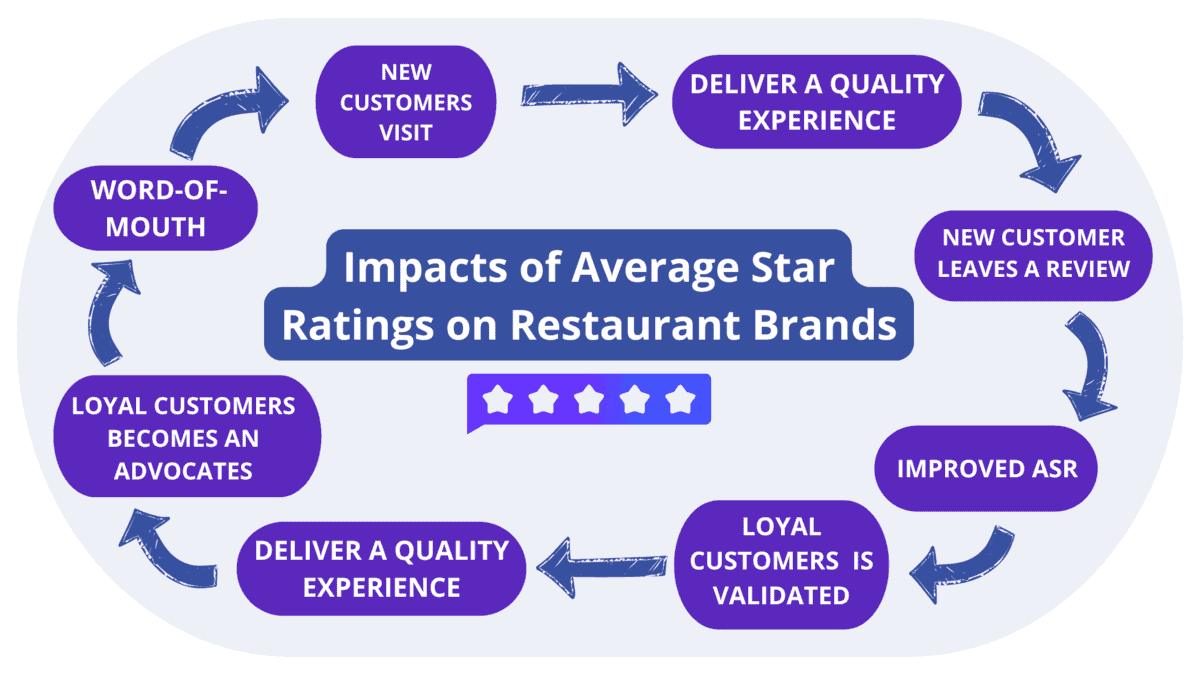
Conclusion: The Star Rating Strategy
In conclusion, Average Star Ratings are vital to your restaurant brand’s success.
The impact of your ASR goes far beyond being numbers on a screen.
By understanding and leveraging the impact of ASR, brands can protect their reputation, attract more customers, and ultimately drive financial success.
Your ASR isn’t just a rating; it’s a powerful reflection of your brand that can significantly influence your bottom line and position your business for long-term growth.
